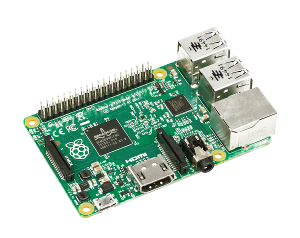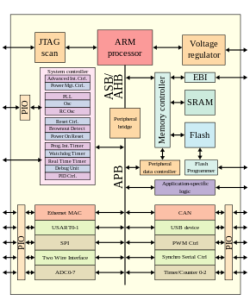
System on Chip Basics: A Step-by-Step Guide for Novices
August 09 2023  1356
1356
Inquiry
Global electronic component supplier AMPHEO PTY LTD: Rich inventory for one-stop shopping. Inquire easily, and receive fast, customized solutions and quotes.
QUICK RFQ
ADD TO RFQ LIST
In this blog post, we will walk you through the basics of SoCs—what they are, how they work, SoC Design flow, and so on—step by step. We will also provide a step-by-step guide on how to choose and use an SoC for your next project.
What is a System on Chip?
A System on Chip (SoC) is a single-chip integrated circuit that houses all or the majority of the parts of a computer or other electronic system, which indicates that every system component, including the CPU, memory, I/O interfaces, and secondary storage interfaces, is located on a single chip.
How do SoCs work?
SoCs operate by utilizing a number of various technologies. The microprocessor is the key piece of technology. The SoC's brain, the microprocessor, manages and directs all of the other parts. A common processing architecture, like ARM or x86, serves as the foundation for the microprocessor. Memory, I/O interfaces, and auxiliary storage interfaces are just a few of the other parts found in SoCs in addition to the microprocessor. Data and programs are kept in the memory. The SoC is connected to other devices, such as sensors, displays, and networks, through the I/O interfaces. Data that isn't being used by the SoC right now is stored using the secondary storage interface.Video related to How SoCs work
Specific Working of SoC
The interaction between a SoC and its peripherals will be very similar to that of a microprocessor or microcontroller; the only distinction is that in this case, the peripherals are incorporated into the chip itself (on the same substrate). This on-chip integration of all needed components has a number of benefits and works well for a wide range of applications.- Low power
- Low price
- Really trustworthy
- Tiny form factor
- High levels of integration
- Swift performance
- Higher design
- Small size
- Cost of fabrication.
- A rise in complexity.
- Demands for time to market.
- More verification.
SoC Design flow

SoC Design Challenges
- Architecture Strategy
- Design for Test Strategy
- Validation Strategy
- Synthesis and Backend Strategy
- Integration Strategy
- On chip Isolation
Applications of SoCs
Most common use of SoCs has been found in the mobile devices industry. The use of SoCs have enabled manufaturers of such devices to come up with devices good of very small form factor that offer ample performance. It also enables them to focus on features they project to the target customers than relying on capabilities of chips provided by some other company. SoCs also brought about a revolution in embedded systems by paving way for very small and portable single-board computers. And you can see more detailed SoCs Applications and SoCs examples in System on Chip vs. System on Module: Unveiling main differences between them.How to choose a SoC?
There are many things to take into account while selecting a SoC for your upcoming project. These elements consist of:- The software program you're creating: Different applications require different SoCs, and vice versa. For instance, if you're designing a smartphone, you'll require a SoC with a powerful CPU and GPU.
- The cost: The cost of a SoC can range from a few dollars to hundreds of dollars. It's crucial to pick a SoC that is within your means.
- The attributes: The features of different SoCs vary. Wi-Fi and Bluetooth are included into some SoCs whereas they are not in others. It is crucial to pick a SoC with the functionality your application requires.
- Development tools: Some SoCs have more readily available development tools than others. It's crucial to pick a SoC with the development tools you require.
How to use a SoC?
After selecting a SoC, you must learn how to use it. You may learn how to use SoCs with the aid of a variety of resources. These sources consist of:- Website of the SoC manufacturer: The majority of SoC manufacturers have a website where they post instructions and material on how to use their SoCs.
- Online forums: You can ask questions and seek assistance from other SoC users on a number of online forums.
- Books: You may learn how to use SoCs from a variety of books that are accessible.
Conclusion
SoCs are a potent technology that can be applied in many different ways. Compared to conventional systems that rely on discrete components, they have a number of benefits, including decreased size, weight, power consumption, enhanced performance, and lower prices. SoCs are becoming more prevalent across a wide range of devices, and they will undoubtedly become much more important in the future.Populer Posts
AFS250-PQG208I
Microsemi Corporation
EPF10K50SFI484-2
Altera
AT6005-2AC
Microchip Technology
XC7S15-2CPGA196C
AMD
EP2C8Q208C8N
Intel
5SGXMA7K2F35C2LG
Intel
EP2AGX125EF35C5G
Intel
T4F81I2X
Efinix, Inc.
10AX057N3F40I2SG
Intel
T13F256C4
Efinix, Inc.
XC7S50-1CSGA324C
AMD
OR3C805PS240-DB
Lattice Semiconductor Corporation
